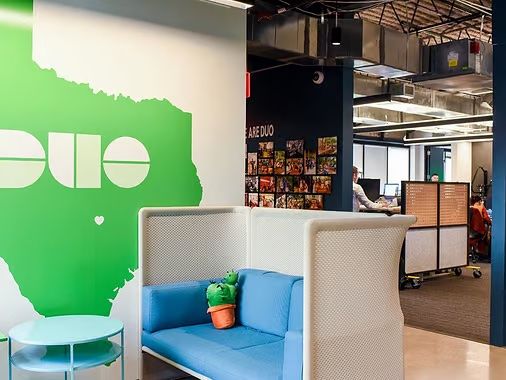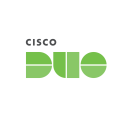They say creativity is contagious, so it’s no wonder working with talented colleagues often inspires design professionals to do their best work.
Whether brainstorming new techniques for gathering information about users or collaborating on compelling ways of communicating these findings, UX professionals need to work together to innovate and get results.
As a design researcher, Duo Security’s Lillian Li works at the intersection of strategy and storytelling, applying her creativity to understanding users' needs, behaviors, experiences and motivations. Since joining the company, she’s been motivated to strive for more inventive research methodologies and memorable approaches to conveying insights, she told Built In Austin.
While she’s had success drawing inspiration from her interests outside the UX world, it’s often her colleagues that help provide the spark.
Studies have found that supportive teams are critical for cultivating creativity in the workplace. Individuals and organizations benefit when colleagues welcome new ideas, challenge one another intellectually and have the freedom to experiment.
At Duo, the design team consistently encourages innovative thinking, Li said, leading to more meaningful and actionable user insights.
Read on for more about her recent projects and go-to resources.

Duo Security is a cybersecurity company that provides multi-factor authentication, secure single sign-on and remote access products to protect organizations against data breaches.
If you feel like your UI/UX design work is becoming stale, where do you turn for inspiration on the job?
As a researcher, I rarely feel like my work is stale. The human element of my research means that nothing is predictable or even fully replicable across projects, even ones that use the same research methods or cover the same subject area. Instead, I like to think that every previous project serves as the foundation for my next project. As a result, I often look back on my former projects to inspire how I build my current one.
In that same vein, I also like to revisit artifacts from my colleagues' projects, such as their discussion guides and their synthesis boards, because the devil is really in the details of research work. For example, I love finding all the subtle ways you can phrase a question to get at the same answer, or all the ways you can organize your data on Miro or Google Sheets to get ready for synthesis. I also find inspiration in other forms of research or storytelling. For example, the interview technique for the persona project I share below was inspired in part by Gay Talese's iconic profile "Frank Sinatra Has a Cold," in which, barred from interviewing Sinatra, Talese interviews everyone around Sinatra, and creates a better portrait of the man.
How do your colleagues inspire or encourage you to continue pushing the envelope creatively?
The culture of Duo's research team is one that not only allows but encourages researchers to incorporate their unique strengths and preferences into traditional research methods, as well as how we share the results of that research. I've sat in on interviews run by different team members and have been amazed by the varying approaches. Some more explicitly move an interviewee through the discussion guide, while others create a more free-form conversation, but no matter the approach, we're able to come out of the interview with a happy subject and loads of rich data.
One area that always blows me away is how my colleagues use their creativity to make sure that our research is sticky. In one presentation, Design Research Manager Cheryl Icban and Lead Product Designer Andrea Neuhoff created the idea of the “Policy Nacho” to explain the mental model that users and Duo employees possess around how policy works. Senior Design Researcher Kaush Ganesh, meanwhile, presents testimonials from participants of her Accessibility Research program to show both the learnings and the value of the program. My colleagues inspire me to spend time sculpting the perfect stories and analogies to communicate findings to our audiences.
My colleagues inspire me to spend time sculpting the perfect stories and analogies to communicate findings to our audiences.”
Can you recall an example of a recent project where you broke with typical conventions while still abiding by best practices? How did your company or colleagues encourage you to do so, and what were the benefits of that?
When I worked with Lead Design Researcher Mark Thompson-Kolar to create a new user persona, we struggled to schedule applicable interview subjects. This wasn't surprising given that our subject matter experts had warned us that a touchstone of this persona was their incredibly busy schedules. I brought up the idea to Mark that we could interview more SMEs who work very closely with this persona so we would walk away from each interview with both persona data and contacts to potential interview subjects.
Mark was the perfect person to encourage this, as he led the research to create Duo's original personas and then helped lead the Cisco Security Business Group persona unification effort. He is both incredibly knowledgeable about persona creation and very experienced in working around research limitations, and when he encouraged this route, it gave me the confidence that this double-pronged interview approach would be successful. By speaking to many more SMEs than is typical, we were able to not only leverage their relationships with people who were excellent persona subjects but also bolster our persona data with information about how this persona works with Cisco.







